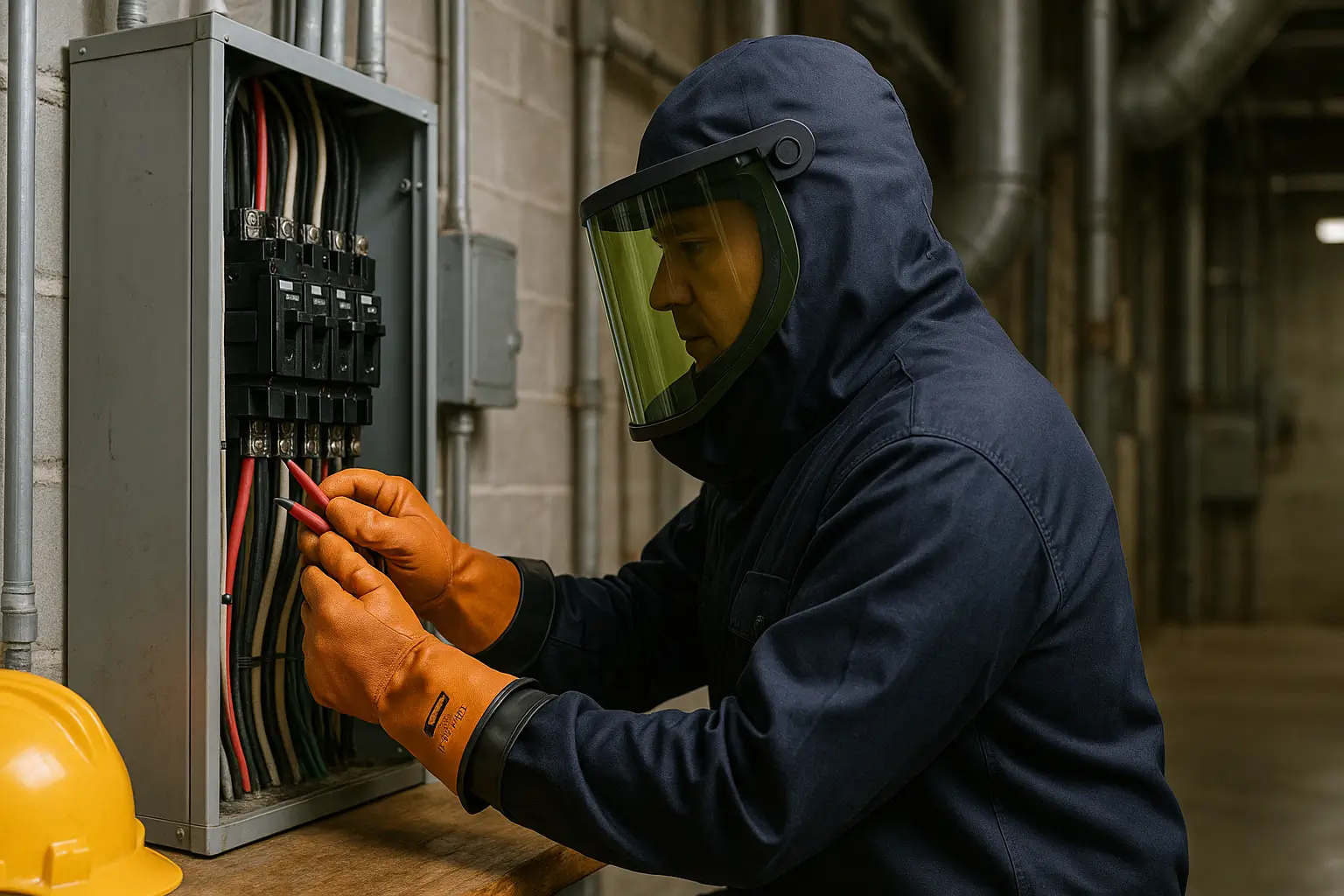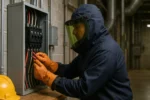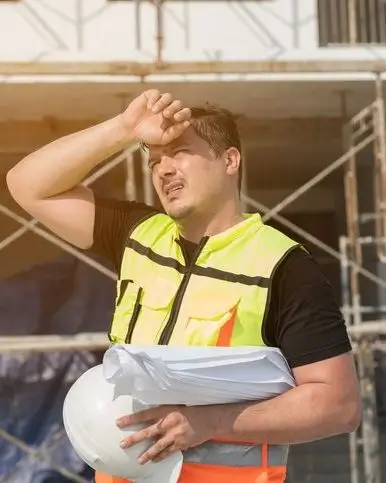
Many people, particularly those who do demanding labor in hot and humid working conditions, suffer from heat stress, especially during the summer months. Workers in the construction industry are among the most at risk, as they primarily work outdoors and are constantly exposed to high temperatures. This exposure not only affects their health but also reduces productivity. In this heat stress guide, we will learn everything to know about this workplace hazard.
What is Heat Stress?

Heat stress occurs when the body is unable to regulate its internal temperature due to prolonged exposure to high temperatures. This can result in a range of symptoms, including heat rashes, heat cramps, fatigue, and, in extreme cases, heat exhaustion or heatstroke. While rashes and cramps are unpleasant, heat exhaustion and heatstroke are serious medical emergencies that require immediate attention.
Some warning signs of heat stress include dizziness, ligHouradedness, headache, nausea, vomiting, and diarrhea. These symptoms arise because the body redirects blood away from vital organs and muscles to the skin in an effort to cool down. At the same time, excessive sweating leads to dehydration.
In 2022, it was estimated that 148 fatalities and 205 injuries were caused by heat-related factors. These incidents highlight the importance of recognizing the signs of heat stress early so that action can be taken to prevent more severe outcomes. There are different such heat stress examples that paint a harrowing picture of the situation.
How Heat Affects the Body
At high temperatures, the body’s usual methods of cooling, radiation, convection, conduction, and evaporation become less effective. Radiation stops once air and skin temperatures even out. Convection no longer works when circulating air is warm. Conduction is ineffective if there’s nothing cool to touch. And in humid environments, sweat doesn’t evaporate, which means the body can’t cool itself properly.
To
&
To
Heat stress becomes likely when temperatures range from 85–95°F with humidity levels of 30–60%. When temperatures exceed 95°F and humidity climbs above 60%, the risk of serious heat-related illness dramatically increases.
How does heat stress start?
To
As the air and skin temperatures normalize, radiation stops working. Convection is no longer possible since the circulating air is now warm rather than cool. Conduction is not possible if there is nothing cool to contact. In addition, if the air is humid, sweat will not evaporate. Heat stress is likely at temperatures between 85 and 95 degrees Fahrenheit, with humidity levels ranging from 30 to 60%. Workers are in even more danger when the temperature goes beyond 95 degrees F and the humidity rises above 60%. Due to exposure to high temperatures, workers develop heat rash, heat cramps, heat exhaustion, or heat stroke, which can cost workers’ lives.
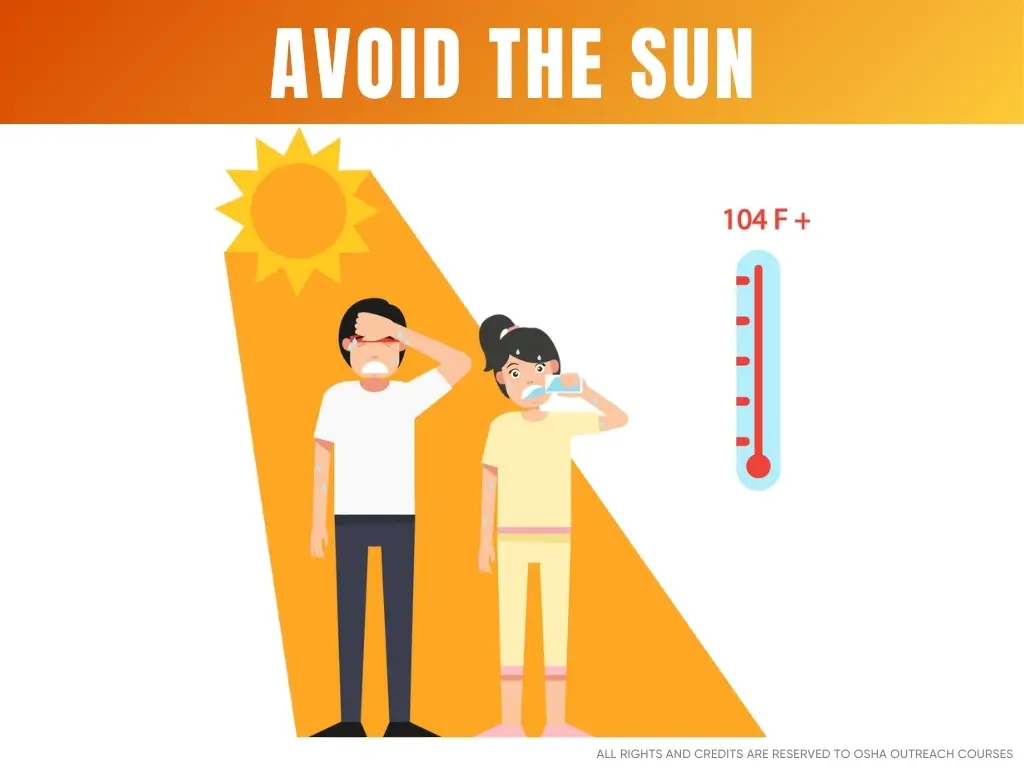
Employees should make additional efforts to heat stress prevention in the workplace, especially while working in warm weather or outside. When people cannot control their internal body temperature, they become ill from it. Sweating is a natural method to cool down in hot weather. Sometimes, sweating alone isn’t enough. A very sweaty workout, excessive heat, and little to no ventilation are examples of such scenarios. Medical conditions and medications may also reduce a person’s tolerance to heat.
Factors contributing to heat illness
To
From 2001 to 2010, 20 states in the US recorded a total of about 28,000 heat-related hospitalizations. Here are some of the reasons heat illnesses can occur in workplaces.
- High temperature
- Extreme humidity
- Direct exposure to the sun
- Intense physical labor
- Sudden exposure to hot work environments
- Low intake of liquid
- Heavy or waterproof clothing
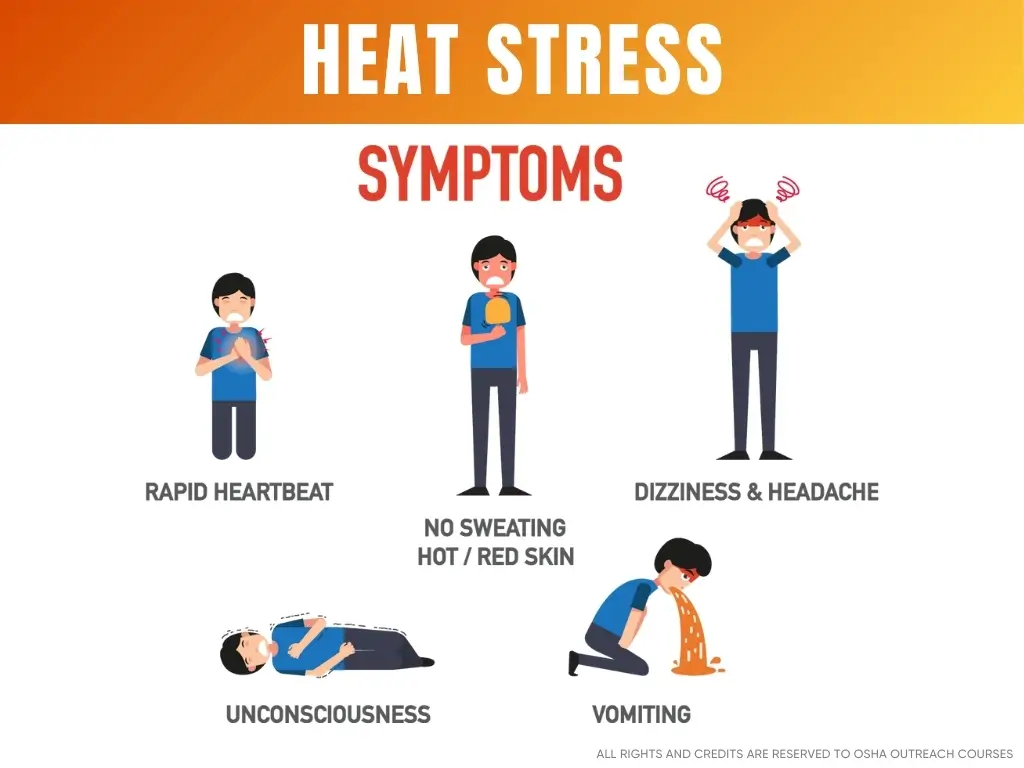
Heat stress symptoms
Here are some symptoms that can show if a worker suffers from heat exhaustion.
- Weakness
- Wet skin
- Irritability
- Confusion
- Thirst
- Nausea
- Vomiting
Heat-related dangers
people in the United States are killed
It is estimated that 1,220 people in the United States are killed as a result of extreme heat every year. Here are some dangers related to heat exhaustion and stroke.
- When sweat glands are not functioning freely, it causes skin discomfort. Wear clothes that allow sweat to evaporate, and take frequent breaks to help your skin dry and prevent heat stress.
- Dehydration results from perspiration. Salt deficiency causes muscle spasms and cramps. Drinking water and salt refills will assist you.
- Symptoms such as weariness, headache, dizziness, and nausea can occur when a considerable volume of fluid (and sometimes salt) is lost. You’ll want to stay hydrated, replace salt, and rest frequently. Heat exhaustion can be a sign of impending heat stroke.
- Excessive heat raises the human body’s temperature considerably. If it gets too high, the body’s natural cooling process fails. It also results in dried skin and skin burns. In this situation, first-aid should be administered immediately. Move the victim to a cool environment and fan vigorously until help arrives.
Prevention from heat stress
Several heat stress management techniques exist that can lessen the effect of this condition. Knowing the signs and symptoms of heat stress provides the opportunity to take action. Also, in outdoor workplaces, it is better to work in teams rather than individually. This will ensure that if a worker suffers from heat stress, there will be someone available to help. Having a regular outdoor exercise routine can also be extremely beneficial for combating heat stress. Such activities allow our bodies to acclimatize to warm weather and allow them to better cope with excessive heat conditions. You can enroll in a heat stress training online course to equip yourself with the knowledge and skills to deal with this hazard.

Here are some of the best ways to prevent heat-related health issues.
- Develop a comprehensive heat exhaustion prevention initiative.
- Conduct training on heat stress hazards and prevention measures.
- Make sure there's an ample supply of cool water near workstations, providing at least one pint per hour.
- Adjust work schedules, incorporating frequent rest periods and water breaks in shaded or air-conditioned areas.
- Gradually ramp up workloads and allow more breaks for new or returning workers to acclimatize to the heat.
- Assign a dedicated individual to monitor conditions and safeguard at-risk workers from heat stress.
- Evaluate the use of cooling protective clothing options.
- Adjust work schedules for more frequent rest periods in shaded or air-conditioned areas.
- Gradually increase workloads and provide additional breaks for new or returning workers to adapt to heat.
- Designate a responsible monitor to protect workers at risk of heat stress.
- Explore cooling protective clothing options.
How do we respond to heat-related sickness?
Here’s what you need to do if one of the workers falls ill due to heat-related reasons.
- Contact a supervisor or dial 911 if unavailable.
- Stay with the worker until assistance arrives.
- Transfer the worker to a cooler/shaded spot.
- Assist in removing outer clothing.
- Fan and mist the worker with water, and apply ice packs or towels.
- Offer cool drinking water if the worker can drink.
Conclusion
Take your time adjusting to the heat and humidity. A heatwave strains your body. Reduce your exercise until you get used to the heat, and you will have more stamina. Adjusting to difficult conditions may take days or weeks. Gradual adaptation increases workers’ capacity to sweat, which cools the body and helps maintain a stable temperature.
Headache, dizziness, ligHouradedness, fainting, weakness, malaise, mood change, mental disorientation, and nausea or vomiting are all symptoms of heat-related sickness. If you display any of these symptoms, go to the hospital immediately.




